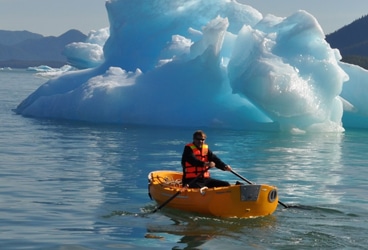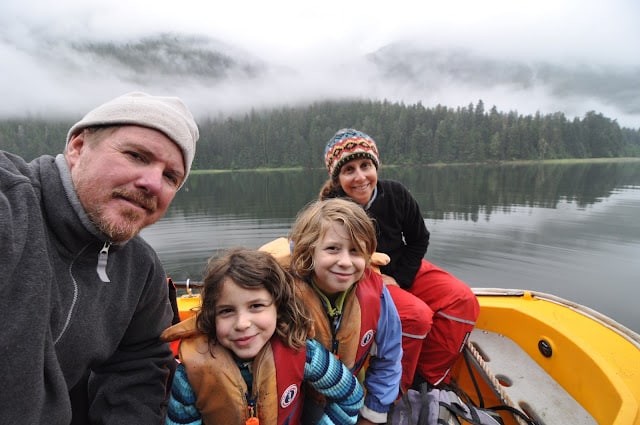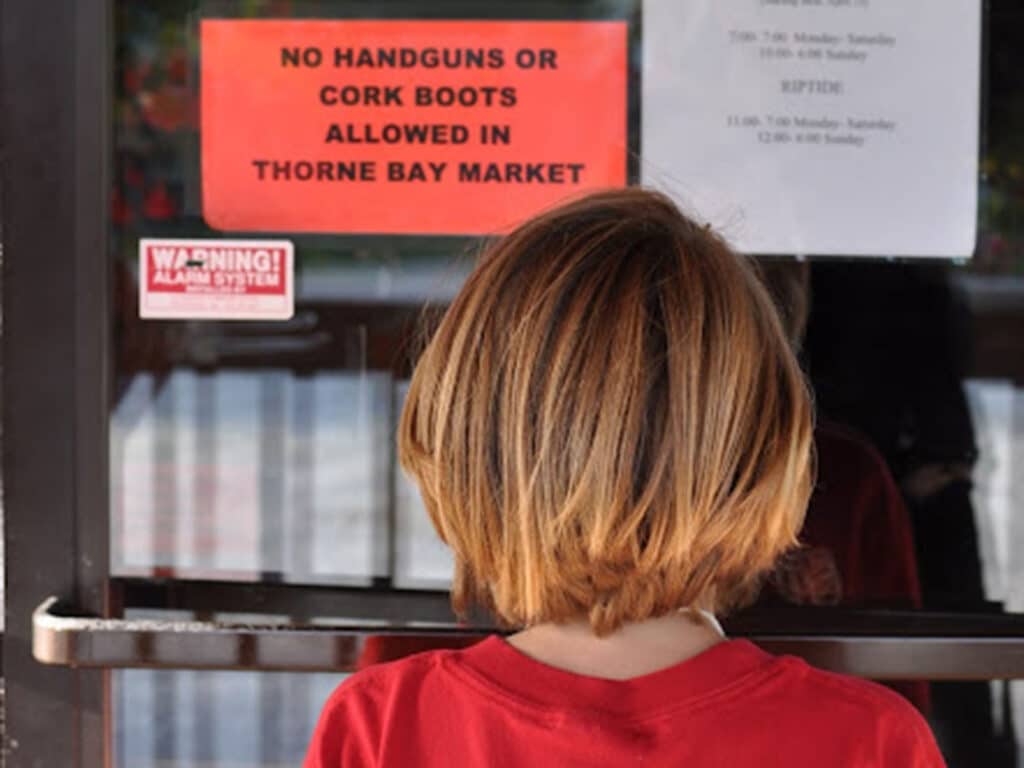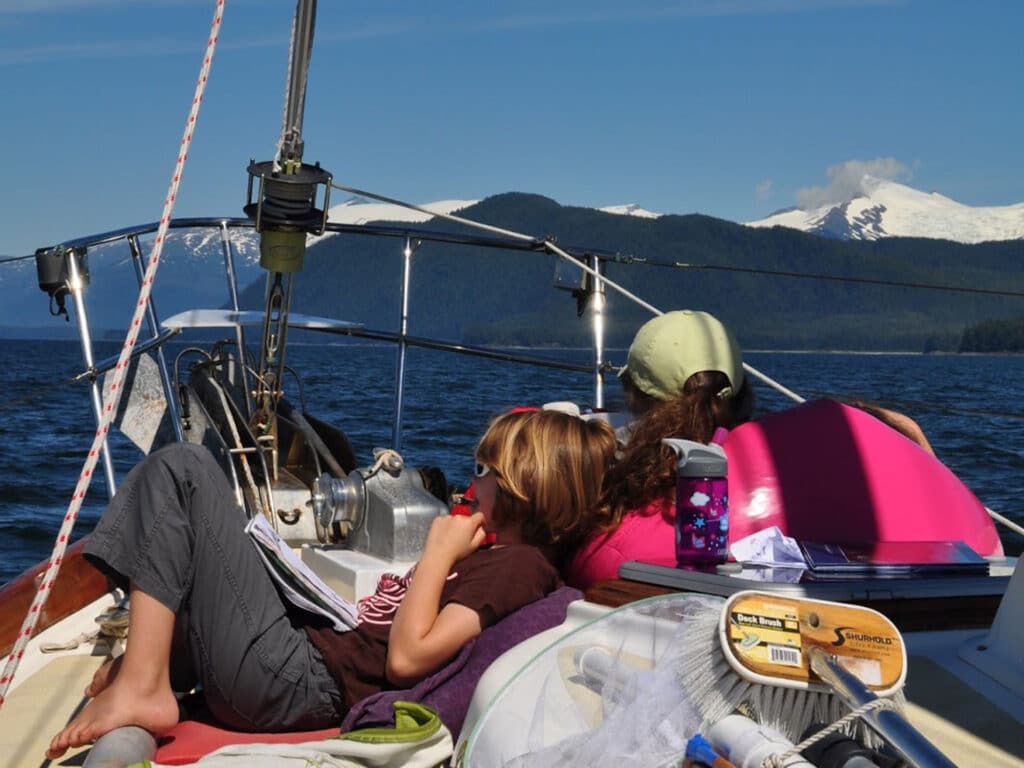
I thought at first I was looking at a boat, a big, white cabin cruiser in the distance, anchored at the base of more green mountains. Then it was closer, our first iceberg, and it was otherworldly.
I know, just frozen water, but massive, sculpted blocks of the stuff floating where we sailed, was magical.
As we entered Tracy Arm—a winding, narrow, 30-mile fjord off Holkham Bay—ice was everywhere. The icebergs and bergy bits were easy to spot, but the smaller growlers demanded hours with one of us at the helm, hand steering, and the other on the bow, focusing ahead.
Like our trip up the Princess Louisa Inlet to Chatterbox Falls, the steep, glacier-carved mountains were streaked with waterfalls thousands of feet up. Fifty feet from shore, the water was 300 feet deep; in the middle of the half-mile-wide channel, it is over 1,000 feet. Yet the color of the water, a milky turquoise from meltwater, belied the depth.

About twenty miles up, we turned left into an intersecting fjord that led to North Sawyer Glacier. Rock wall shot straight up from the water to two-thousand feet, bare and displaying the patterned scars from unimaginable forces. Then, around the corner, a glacier like we’d seen only in pictures, rendered in jagged, bunched spires of cool blues and whites.
A deep boom and CRACK! sounded over the kunk-kunk-kunk of our engine to announce the white cloud of ice we’d already seen. Then, with a splash, a new iceberg pitched and rolled in the cold water at the base of the glacier, finding its equilibrium. We floated in-place for an hour, taking pictures and taking it all in.
The South Sawyer Glacier is larger and known to be more active (meaning it calves more icebergs). This was evident as we approached; the channel was almost completely clogged. Two hours later, moving forward at less than half-a-knot, we were within a quarter mile of the face, but the size of the thing and the landscape that framed it, interrupted the scale of everything, making it seem like we were within a hundred yards.

For all the reading I’ve done about high-latitude cruising, I’m embarrassed to say I always imagined growlers—much of what we picked our way through—and even bergy bits, were not a big deal, something you could simply motor through, pushing them out of the way with the hull as slowly blazed a trail. But seeing 50- to 500-pound growlers in the water ahead, having poked at them with the boat hook and rammed them with the Portland Pudgy, I realized they are a big deal. In our days in Tracy Arm, I came to see anything bigger than a softball as a floating boulder, a landmine to our fiberglass hull.

And for me that highlights one of the main reasons we travel: to see, touch, and hear things for ourselves. So far, it’s been illuminating and more dazzling than anything I imagined.
In our twenties, we traded our boat for a house and our freedom for careers. In our thirties, we slumbered through the American dream. In our forties, we woke and traded our house for a boat and our careers for freedom. And here we are. Follow along at http://www.logofdelviento.blogspot.com/








